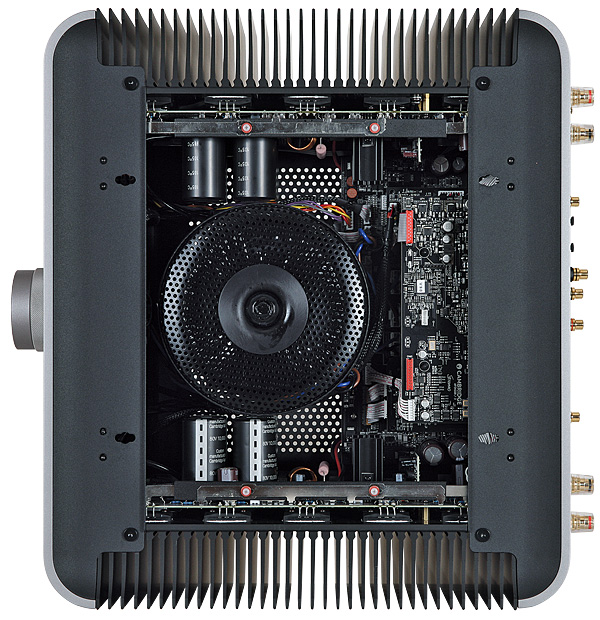Cambridge Audio Edge A integrated amplifier Page 2
PM discusses the ‘Class XA’ working of the Edge A power amplification, which comfortably exceeds the quoted 100W/8ohm [see Lab Report], but other notable aspects of the design include its twin toroidal transformers, mounted back-to-back to cancel common-mode noise and interference. Also in the quest to minimise distortion, the preamp board eliminates capacitors in the signal path in favour of a DC coupled topology, while the solid-state volume control, ‘driven’ by that single (well, double) knob on the front panel, boasts a very accurate channel balance across its operating range.
The digital board is bang on the money in terms of format handling, able to cope with 384kHz/32-bit PCM and DSD256/11.2MHz, although Windows users will, as usual, need to download a driver, available from the Cambridge Audio website, to achieve these highs.
![]() Competitive Edge
Competitive Edge
I happened to have the new Hegel H590 integrated to hand when auditioning the Edge A, and comparisons between the two proved very illuminating. The Norwegian amp is of a similar size and weight, and has a similarly minimalist ethic despite its inclusion of network streaming capability.

Yes, it’s more powerful than the Edge A – if you get hung up on maximum power output – but, although it’s also twice the price, I could readily imagine anyone looking for a ‘big integrated’ considering both models side by side, as I had the opportunity to do. So I’m not going to tease you with the pros and cons of the two, as – aside from those considerations just mentioned – the two amplifiers are very similar in performance, which simply means the Cambridge Edge A walks it by doing all it does for half the price of the Hegel. Indeed, you could read much of the sonic description of that amp last month, ‘find and replace’ the two model designations, and you’d be just about covered – apart from the even more enthusiastic verdict on this page, taking into consideration the price differential.
Plain Magnificent
What the Edge A does is, to put it bluntly, instant communication. Spin the alternative take of Canned Heat’s ‘On The Road Again’ from the 2017 re-release of the band’s 1967 eponymous album [Liberty UICY-78381] and, from the opening studio banter the amp captures the attention with the sense of the band in the studio, the simple percussion backing and the vibrato of Alan Wilson’s harp. It’s a so-familiar track laid out afresh, and through this amp, even when fed via USB from a simple Asus Tinkerboard running Roon, it sounds just plain magnificent.
Take it down to Jackson Browne’s beautiful version of ‘For A Dancer’ on his 2005 Live Acoustic Vol 1 set [Inside Recordings 0094634494021], and the total focus of the amplifier, and the way it reveals both vocal and instrumental timbres, is the kind of thing that has you trying one track and then listening to a whole album.
The same is true with the rich acoustic of the recently released St John’s College Choir recording of Vaughan Williams’s 1920 anthem ‘O Clap Your Hands’ [Signum SIGCD541; 96kHz/24-bit]. This isn’t a close-up sound, but one that places the choir in a credible space, and it’s revealed perfectly by the Edge A.
The amplifier is just as convincing with the Amsterdam Sinfonietta’s beautifully recorded recent programme of Bartók and Brahms [Channel Classics CCS 37518; DSD256]. The striking dynamic ability on offer brings out all the drama of the music while maintaining entirely natural instrumental tones and musical flow, such that the performance seems to be over all too soon.
In case you were wondering, yes – the Edge A will do all the chest-beating and room-shaking you could ever want, running at very high levels while maintaining both grip and control, but then that’s almost the easy part for a big, powerful amplifier. What sets this one apart is the seemingly effortless purity it brings to everything you play, which is always a delight.
Hi-Fi News Verdict
Ambition is rewarded in the Edge A. The Cambridge brand may in recent years have been better-known for entry-level/midrange hi-fi, but this is a truly high-end contender with totally convincing performance, design and build, and capable of compelling delivery of music. You’d have to spend considerably more to match or better the quality on offer here, making this nothing short of a conspicuous bargain.

















































